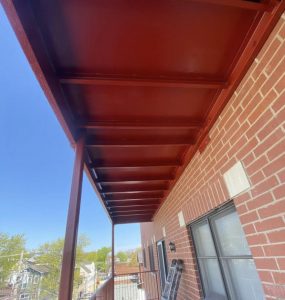Choosing the right paint for your home's interior and exterior is crucial for achieving a beautiful and durable finish. With a vast array of options on the market, navigating through different types, properties, and factors can seem daunting. This comprehensive guide breaks down everything you need to know to make a well-informed choice and achieve professional-quality results, supported by professional metal painting services.
Understanding Different Types of Paint
Interior Paints and Their Characteristics
Interior paints are formulated for use inside your home, focusing on features like low odor, smooth application, and varying finishes to match indoor aesthetics. Typically, these paints prioritize minimal environmental toxicity due to better ventilated conditions in interiors.
Exterior Paints and Their Unique Properties
Exterior paints are designed for toughness, withstanding environmental factors like sunlight, rain, and temperature changes. On exposed substrates such as fences, porches, and balconies, consider coating systems tailored to the element, e.g., metal fence painting or metal balcony painting to improve UV resistance, corrosion protection, and long-term performance.
Key Factors in Choosing Interior Paint
Color Selection and Aesthetics
The choice of color sets the tone and mood of your space. Consider the size, lighting, and purpose of the room when selecting shades, as these factors profoundly influence perception and ambiance.
Finish Options and Their Applications
Paint finishes, including matte, satin, and gloss, determine the texture and sheen of the painted surface. High-traffic areas generally benefit from easy-to-clean satin or semi-gloss finishes.
Durability and Maintenance Considerations
Opt for paints with stain-resistant and low-VOC (Volatile Organic Compound) formulations for longevity and environmental friendliness. This ensures minimal upkeep and a healthier environment for occupants.
Essential Criteria for Selecting Exterior Paint
Weather Resistance and Longevity
Exterior paints must endure environmental extremes. Seek paints labeled as "weatherproof" or "all-weather" for lasting performance.
Environmental Considerations and Impact
Choose paints with eco-friendly certifications to minimize environmental harm. Look for low-VOC formulas and recyclable packaging as environmentally-conscious options.
Compatibility With Building Materials
Tailor your paint selection according to the material being coated, such as wood, brick, or metal. Proper compatibility enhances adhesion and appearance.
Comparing Brands and Quality
Recognizing Trusted Paint Brands
Reputable paint brands invest in quality assurance, providing reliable outcomes with extensive product lines suited for diverse applications.
Evaluating Cost-Effectiveness Relative to Quality
Weigh price against durability, coverage, and the number of coats required. Consult ironwork specialists to align product choice with substrate, exposure, and maintenance goals.
Practical Tips for Buying and Applying Paint
Calculating Needed Quantities
Measure the total surface area and factor in texture and the number of coats to avoid under-buying; for exposed metal features, account for primers and topcoats used in exterior metal refinishing to reach full coverage.
Preparation for a Successful Paint Job
Surface preparation is fundamental for optimal application. Clean, repair, and prime surfaces to ensure paint adherence and a smooth finish.
Understanding Application Best Practices
Follow manufacturer instructions for tools, techniques, and drying times to execute a professional-grade paint job.
Conclusion
Selecting the appropriate paint for your home ensures appealing aesthetics and lasting quality. By considering the factors outlined in this guide, you can confidently invest in materials and application methods that fit your goals and, for exposed metal features, consult exterior metal finishing specialists.
If you’d like hands-on support, contact us for professional custom ironwork solutions to complement your interior and exterior finishes.
Key Takeaways
Differentiate your paint choice between interior and exterior based on their specific formulations and durability requirements.
Consider factors like color, finish options, and maintenance ease when selecting interior paints to match the room's purpose and decor.
Evaluate weather resistance and material compatibility for exterior paints to ensure lasting performance against environmental conditions.
Leverage eco-friendly options like low-VOC formulas and recyclable packaging to support sustainability in your painting project.
Choose reputable paint brands that balance cost-effectiveness, quality, and durability for a satisfying and efficient painting experience.
Prepare surfaces thoroughly before application to ensure adherence, and follow best practices for a professional-grade finish.
FAQs on Choosing the Best Paint for Your Home
What are the main differences between interior and exterior paints?
- Interior paints are formulated for indoor use, emphasizing low odor and aesthetic finishes, whereas exterior paints are designed for durability, resisting environmental factors such as weather, sunlight, and temperature changes.
Why is selecting the right paint finish important for a project?
- Choosing the appropriate paint finish, such as matte, satin, or gloss, affects the texture, sheen, and cleanability of painted surfaces, tailored to factors like room use and aesthetic preferences.
How can I ensure an environmentally friendly choice when selecting paint?
- To make an eco-conscious choice, opt for paints with low VOC content, environmentally friendly certifications, and recyclable packaging.
What factors should I consider when selecting exterior paint?
- For exterior paint, prioritize weather resistance, longevity, and compatibility with the building material, such as wood or brick, to ensure a durable and appealing finish.
What steps should I follow to prepare surfaces for painting?
- Proper preparation includes cleaning, repairing, and priming surfaces before paint application, which ensures better adhesion and a long-lasting, smooth finish.

